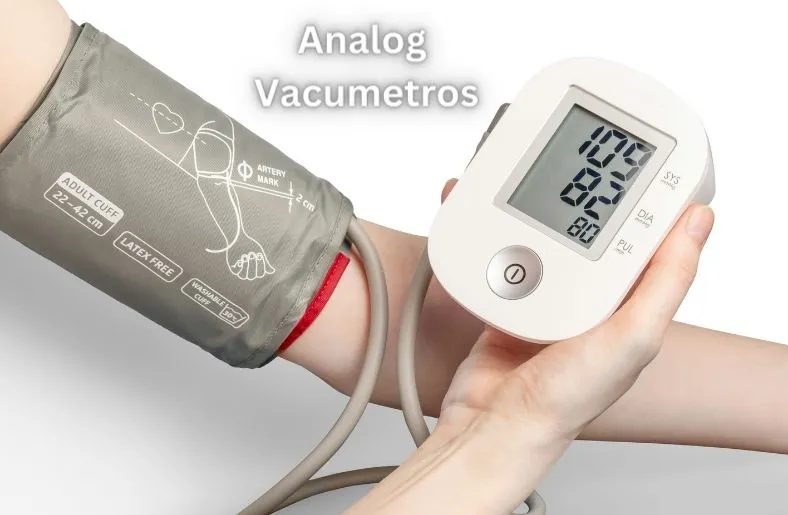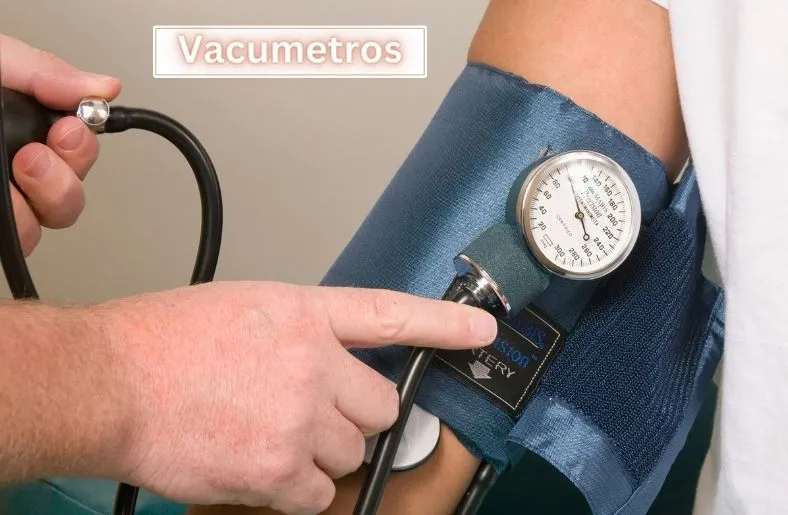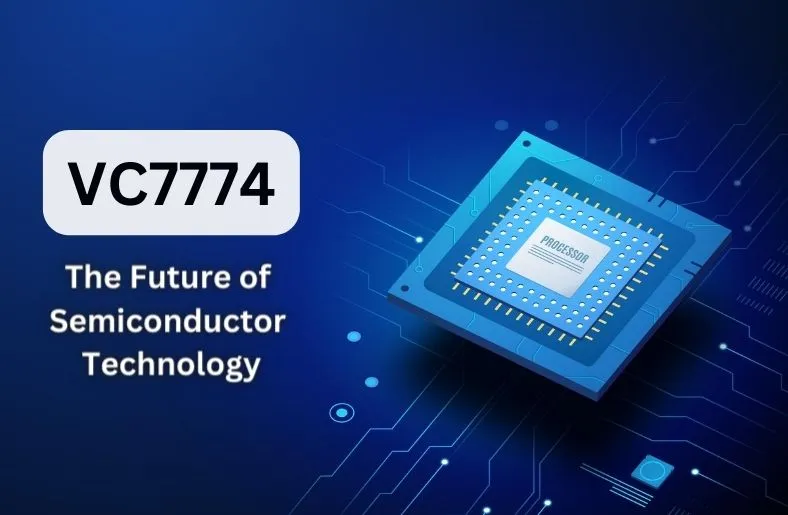Vacumetros, commonly known as vacuum gauges, are indispensable tools across industries, ensuring optimal performance in vacuum technology. In this article, we aim to shed light on vacumetros’ significance and demystify their role in various industrial processes. By understanding their functionality, we can appreciate their crucial role in maintaining vacuum levels. Let’s embark on a journey to unravel the mysteries of vacumetros and explore their profound impact on vacuum technology.
I. Understanding Vacumetros
Vacumetros, sometimes referred to as vacuum gauges, are essential equipment for determining and keeping track of vacuum levels. They function based on detecting pressure differentials within a vacuum chamber. Over time, vacumetros have evolved from traditional analog models to modern digital versions, offering enhanced accuracy and functionality.
Various types of vacumetros are available, each tailored to specific applications. Analog vacumetros provide real-time pressure readings through mechanical displays, while digital vacumetros offer additional features like data logging and remote monitoring. Understanding the different types of vacumetros is essential for selecting the right tool for specific industrial processes.
II. Types of Vacumetros
Vacumetros come in several variations, each serving distinct purposes and offering unique functionalities. Analog vacumetros, for example, provide traditional pressure readings with mechanical displays.
On the other hand, digital vacumetros utilize advanced electronic displays and offer additional features such as data logging. These versions are preferred for their enhanced usability and versatility.
Moreover, there are specialized vacumetros optimized for specific applications, such as high vacuum gauges designed for ultra-high vacuum measurements.
Portable vacumetros, compact and lightweight, are ideal for on-the-go applications and fieldwork tasks, offering convenience and flexibility in various industrial settings.
III. The Functionality of Vacumetros
Vacumetros operate by utilizing different sensing technologies to measure vacuum levels accurately. These technologies include thermal conductivity, piezoelectric, and capacitive principles. Thermal conductivity vacumetros measure pressure by assessing the rate at which heat is transferred through a gas. Piezoelectric vacumetros detect pressure changes by converting mechanical stress into an electrical charge. Capacitive vacumetros measure pressure variations by assessing changes in capacitance between two conductive plates.
Analog vacumetros function through mechanical displays, providing real-time pressure readings based on the movement of a needle or dial. In contrast, digital vacumetros utilize electronic displays and offer additional features like data logging, remote monitoring, and customizable settings for enhanced usability.

Specialized vacumetros cater to specific applications, such as high vacuum gauges for ultra-high vacuum measurements and portable vacumetros for on-the-go tasks. High vacuum gauges utilize advanced sensing technologies to measure extremely low pressures accurately. Portable vacumetros are compact and lightweight, making them ideal for fieldwork, troubleshooting, and maintenance tasks.
IV. Applications of Vacumetros
1. Industrial use of Vacumetros
Industrial processes benefit immensely from vacumetros, which play pivotal roles in vacuum drying processes, where moisture is removed from materials without heat damage. Additionally, in distillation, vacumetros aid in separating mixtures by exploiting differences in boiling points under reduced pressure, ensuring purity and efficiency. Furthermore, in degassing operations, vacumetros assist in removing dissolved gases from liquids, vital in various industries such as pharmaceuticals, food processing, and electronics manufacturing, where gas-free environments are crucial for product quality.
2. Use of vacumetros in Scientific research
Scientific research relies heavily on vacumetros for conducting experiments in vacuum chambers, where air and other gases are removed to simulate space or study the behavior of materials under vacuum conditions. Moreover, in thin-film deposition processes, vacumetros ensure precise control of vacuum levels to achieve desired film thickness and properties, essential in semiconductor manufacturing, optics, and surface coating industries. Additionally, in material science research, vacumetros enable the investigation of material properties and behaviors in vacuum environments, contributing to advancements in various fields such as aerospace, nanotechnology, and renewable energy.
3. Use in Medical
Medical devices incorporate vacumetros, particularly vacuum pumps, in surgical procedures to create suction for removing fluids, tissues, or gases from the body during operations, ensuring clear visibility and facilitating efficient surgeries. Furthermore, it play a crucial role in maintaining sterile environments in healthcare facilities by powering devices such as vacuum-assisted wound closure systems, suction catheters, and medical suction units, preventing infections and promoting patient recovery.
4. Use in Environment monitoring
Environmental monitoring systems utilize vacumetros to measure air pressure in controlled environments, providing valuable data for climate research, weather forecasting, and atmospheric studies. Vacumetros aid in understanding atmospheric pressure variations, which influence weather patterns, air circulation, and climate dynamics, contributing to efforts aimed at mitigating climate change and addressing environmental challenges. Additionally, vacumetros are employed in pollution monitoring and air quality assessment, helping authorities make informed decisions to protect public health and the environment.
V. Benefits of Using Vacumetros
- Precision and Accuracy: Vacumetros provide highly accurate measurements, ensuring reliable vacuum levels for various processes.
- Efficiency Improvement: By maintaining optimal vacuum conditions, they boost productivity and operational efficiency.
- Cost Savings: Accurate vacuum management prevents equipment damage, reducing repair costs and downtime.
- Enhanced Safety: Monitoring vacuum levels helps prevent overpressure or leaks, ensuring safety for personnel and equipment.
- Versatility: Vacumetros are adaptable to diverse industries, from manufacturing to medical fields.
- Ease of Integration: They can seamlessly integrate with control systems, enhancing automation and data logging.
- Quality Control: Consistent vacuum conditions ensure high-quality outputs in manufacturing and research.
- Environmental Monitoring: Vacumetros aid in monitoring and maintaining air quality and controlled environments.
- Extended Equipment Lifespan: Proper vacuum management reduces wear and tear on equipment, prolonging its lifespan.
- Real-Time Monitoring: Digital vacumetros provide real-time data, facilitating immediate adjustments and optimizations.
VI. Tips for Optimal Usage of Vacumetros
1. Importance of Regular Calibration and Maintenance
Regular calibration ensures accuracy. Vacumetros must be calibrated to maintain precision. Follow manufacturer guidelines for calibration frequency. Maintenance is equally crucial. Clean sensors and components regularly. Inspect for wear and tear. Proper maintenance prolongs device lifespan. Neglect can lead to inaccurate readings.
2. Training for Personnel Operating Vacumetros
Training is vital for effective use. Operators should understand device functionality. Training prevents misuse and accidents. Knowledgeable staff can troubleshoot minor issues. Proper handling reduces damage risk. Emphasize the importance of regular checks. Trained personnel can spot calibration needs early.
3. Integration with Control Systems for Automated Monitoring and Control
Integration enhances efficiency. Connect vacumetros with control systems. Automated monitoring saves time. Real-time data aids quick decisions. Control systems can adjust vacuum levels automatically. This reduces human error. Integrated systems provide comprehensive reports. They facilitate better process management. Ensure compatibility with existing systems.
VII. Future Trends and Innovations
Sensor technology continues to evolve. New sensors offer greater precision. Digital interfaces improve user interaction. They provide real-time data and diagnostics. Enhanced sensors and interfaces streamline processes.
Artificial intelligence is transforming maintenance. AI analyzes data patterns. It predicts potential failures. This proactive approach reduces downtime. Predictive maintenance extends vacumetro lifespan.
Quantum sensing is the future. It offers ultra-sensitive measurements. Quantum sensors detect minute pressure changes. This technology promises unprecedented accuracy. Though experimental, it holds great potential. Quantum sensing could revolutionize vacuum technology.
Conclusion
Vacumetros are crucial in both industrial and scientific settings. They ensure precise vacuum measurements and enhance various processes. Understanding and utilizing vacumetros optimally is essential. Proper use leads to better performance and efficiency. Embracing vacumetros unlocks their full potential. This results in improved productivity and reliability. As technology advances, vacumetros will become even more vital. Leveraging their capabilities is key to success. Ultimately, vacumetros are indispensable tools in vacuum technology. Their continued evolution promises exciting possibilities. Embrace their power for enhanced efficiency and innovation.





